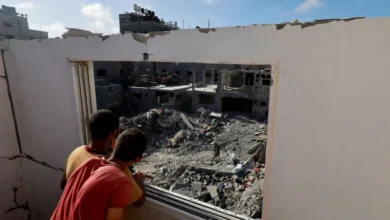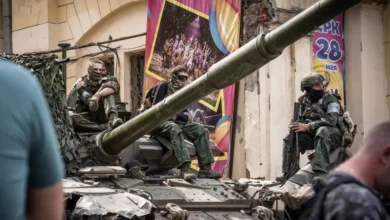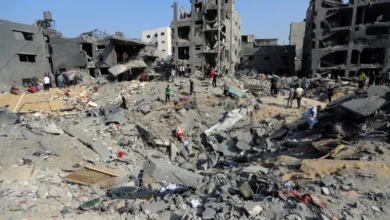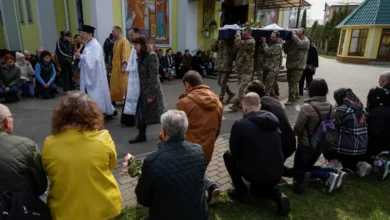Visualising the war in Sudan: Conflict, control and displacement

The war in Sudan is nearing the two-year mark and the enormous suffering of its people continues.
As two powerful armed rivals tear the country apart in what has been termed an “existential battle”, millions have had to flee their homes, hundreds of thousands have been killed, and countless others are going hungry or being abused.
On April 15, 2023, Sudan was plunged into conflict as longstanding tensions between army chief Abdel Fattah al-Burhan and paramilitary Rapid Support Forces (RSF) leader Mohamed Hamdan “Hemedti” Dagalo erupted into war.
Nearly 9,000 recorded attacks
Between April 15, 2023, and October 25, 2024, the warring sides exchanged a total of 8,942 attacks, averaging 16 a day, according to data from the Armed Conflict Location and Event Data Project (ACLED), a crisis mapping organisation.
Geographically, three-quarters of all attacks have centred around three main regions:
Khartoum
More than half of all attacks, 4,858 or 54 percent of all recorded incidents, have been documented around the capital, Khartoum.
Sudan’s army has in recent months launched a major offensive there to reclaim areas seized by the RSF at the beginning of the conflict.
Gezira State
Gezira, Sudan’s agricultural hub south of Khartoum, has seen 1,077 attacks, or about 12 percent of recorded incidents.
North Darfur
Darfur – a western region divided into five states – and its people have long suffered from internal conflict. In North Darfur, there were at least 818 attacks, or 9 percent of all recorded incidents.
Rest of Sudan
The remaining 25 percent of the fighting has been spread across the country, including in South Darfur (361 attacks), North Kordofan (335 attacks) and West Darfur (269 attacks).
Tens of thousands of people killed
According to ACLED, at least 24,000 people have been reported killed across Sudan, though the actual death toll is likely much higher – especially when accounting for indirect deaths such as the spread of disease, malnutrition and lack of adequate healthcare.
About one-third of recorded deaths have occurred in Khartoum, which has the highest casualty rate.
West Darfur follows with 17 percent and North Darfur with 15 percent, highlighting the severe toll of continuing violence in these areas.
Exchange of fire
According to ACLED, Sudan’s army has carried out 4,805 attacks, accounting for 54 percent of reported incidents.
The RSF has conducted 3,069 attacks, making up 34 percent of total recorded incidents.
Other groups, including Darfur Communal Militia, Darfur Arab Militia, Sudan People’s Liberation Movement, Twic Clan Militia and others have been behind the remaining 1,068 (12 percent) of attacks.
Timeline of attacks
After months of tensions, on April 15, 2023, heavy gunfire and explosions erupted in Khartoum, a city of 10 million people.
Gunfire was heard in the vicinity of army headquarters and the Ministry of Defence, the presidential palace and Khartoum International Airport.










